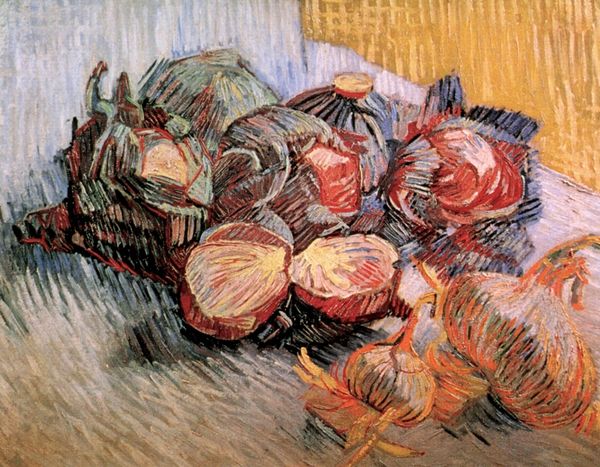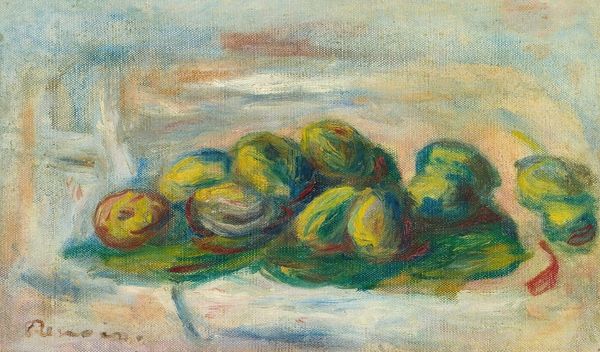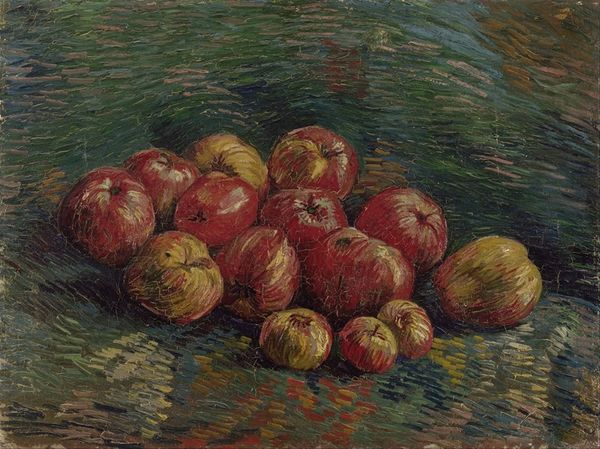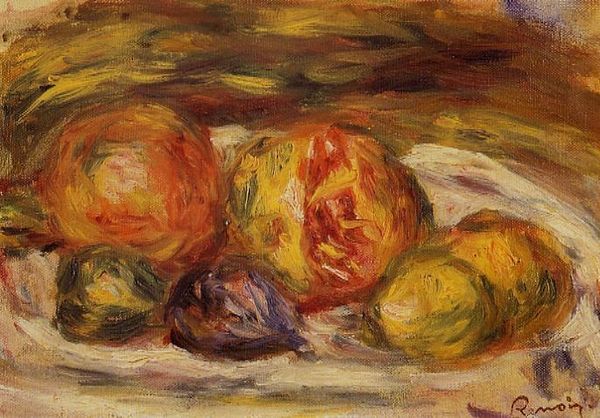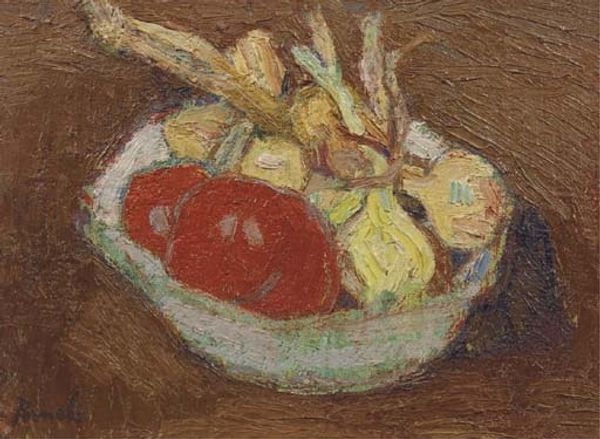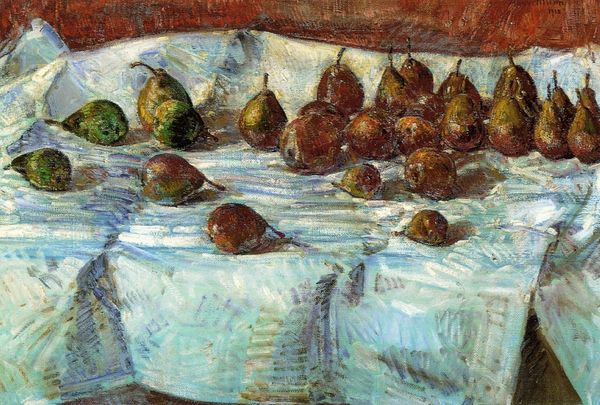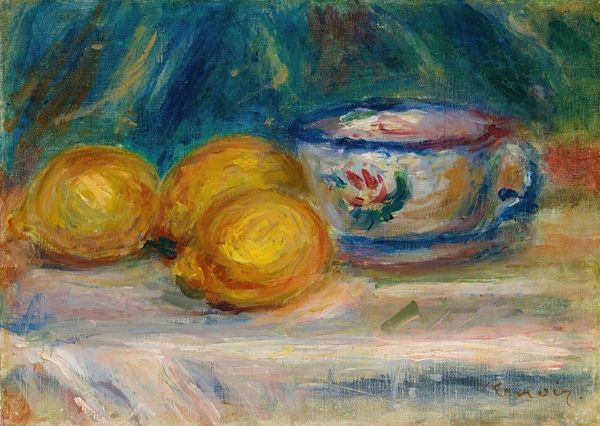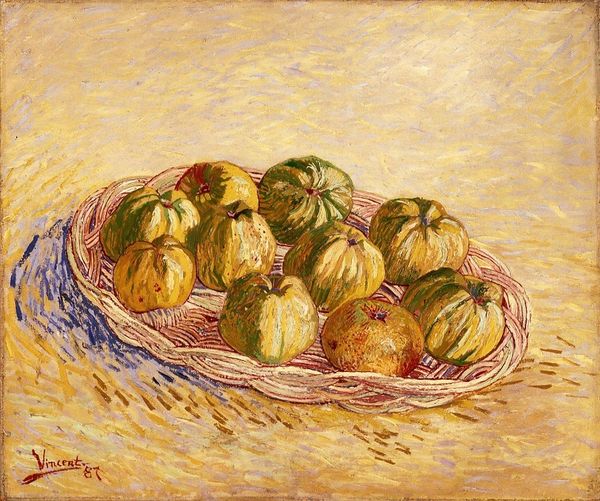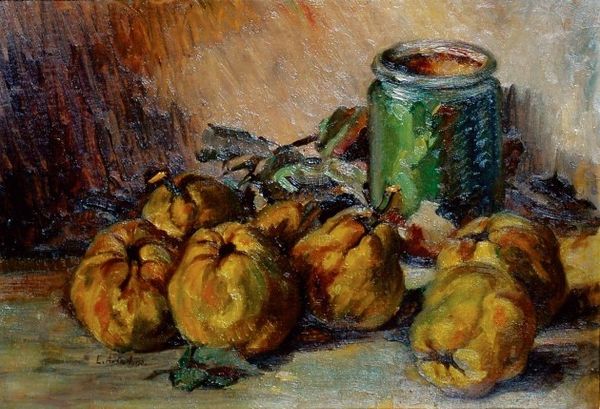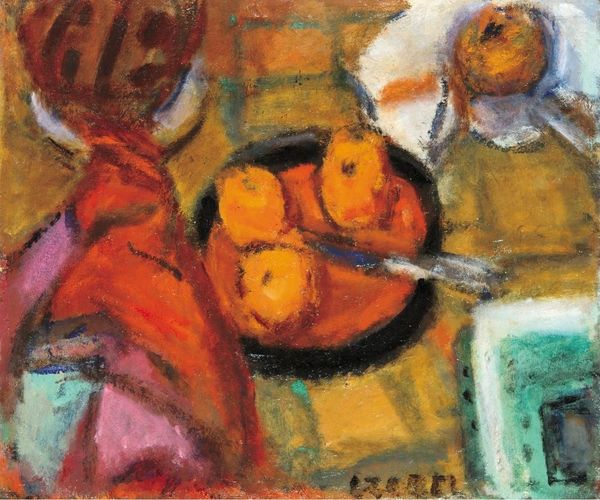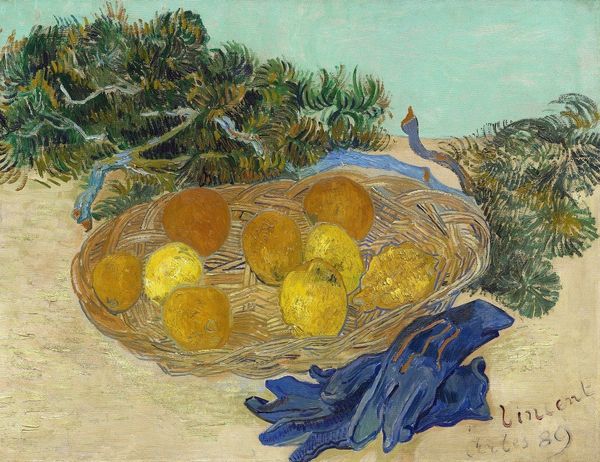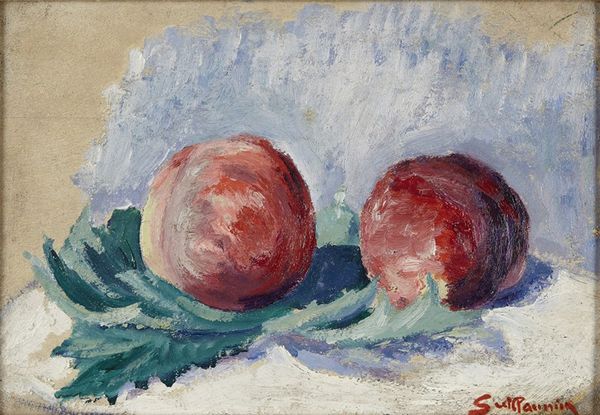
painting, oil-paint, impasto
#
painting
#
oil-paint
#
impasto
#
post-impressionism
Copyright: Public Domain: Artvee
Curator: This still life, rendered in oil paint with visible impasto, comes to us from Vincent van Gogh in 1887. It’s called "Red Cabbages and Onions." Editor: It's... strikingly raw. Not delicate, but certainly visceral. The way he's applied the paint feels almost sculptural; you can practically feel the roughness of the vegetables. Curator: Consider its creation—painted during Van Gogh’s Parisian period. He was absorbing the avant-garde movements and experimenting, of course, influenced by his brother Theo, who connected him to important artistic and intellectual circles. Editor: You can really see that in the thick brushstrokes; they speak volumes about process. The labor of applying those vibrant strokes—that very materiality screams a challenge to traditional ideas of what constitutes "high" art. How does an everyday subject and commonplace labor become something... noble? Curator: Interesting question, and the painting provides hints. There’s a powerful egalitarian message when mundane objects like vegetables receive such dedicated artistic attention. Also consider that he's elevating everyday subjects during a period that celebrates art as a kind of escape. Editor: Exactly! Think about it: here are vegetables. Root vegetables. Their preparation involves getting your hands dirty—a gritty connection to the earth and all its messiness. The onions, especially—you can almost smell them! Curator: But I think to reduce it simply to “vegetables are revolutionary” diminishes its other facets. There’s an undeniable emotional complexity here, with his exploration of the contrast in texture. Editor: Perhaps it is the attention to material qualities—the way light interacts with the rough texture. Curator: An attention reflective of his inner world. It serves as a kind of social commentary through form. Editor: And by giving us just *this*– humble ingredients –the artist urges us to reconsider the aesthetic merit inherent in even the most ordinary of things. Curator: A thoughtful consideration of both materials and means can shift our perspectives profoundly. Editor: Agreed. The ordinary made extraordinary by vision and… vegetable.
Comments
No comments
Be the first to comment and join the conversation on the ultimate creative platform.
